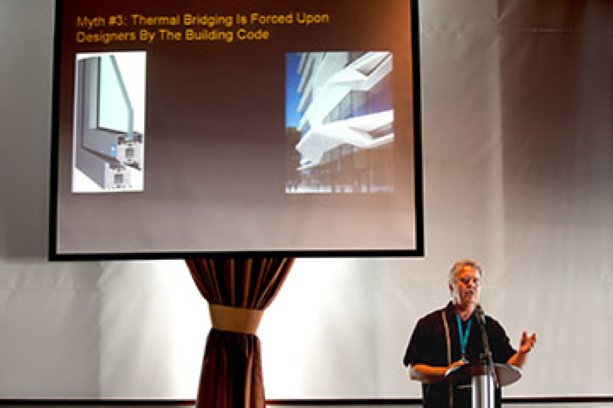Dialogue continued on minimizing thermal bridging, which is vital to creating sustainable buildings, at a recent expert presentation.
Schoeck Canada Inc. (Schöck) hosted an event for leaders and experts in the development industry, to discuss the latest findings and research and explore innovative technologies, which address thermal bridging.
Attendees were able to experience first-hand thermal break concepts and had the opportunity to learn about optimal design, installation and performance solutions.
“We are very encouraged to see the interest to build sustainable infrastructure in North America,” said Dieter Hardock, product manager for Schöck in North America.
“We believe green building is vital to future sustainability and we hope to play an integral role in providing the technology that enables green, environmentally friendly building.”
Ted J. Kesik, an associate professor at the University of Toronto, spoke about the myths and realities of thermal bridging. Debunking one myth, Kesik said building codes do not enforce ethical design.
Far from being forced on designers, thermal bridging solutions can be creative and multi-functional. Moreover, it is up to the designer to set standards for design, performance and functionality, he said.
Kesik also spoke about environmental concerns and said fossil fuel consumption is a result of thermal performance, which can be helped drastically by thermal bridging solutions.
Peter Adams, a principal at Morrison Hershfield Limited, said “it’s going to be more and more challenging to ignore thermal bridging in the future,” due to the trend towards greater thermal performance driven by increased energy costs.
They have used three-dimensional modeling to determine the thermal performance characteristics for a catalogue of building envelope details that include the effects of thermal bridges.
The intent for this information is to make it easier for designers to incorporate the effects of thermal bridging into their designs.
In the final presentation of the day, Sustainable EDGE Limited president Mario Kani compared European and North American building practices. Building performance such as structural integrity, high performance climatic envelope, energy efficiency, indoor environmental quality and occupant health have been priorities in European construction for a long time.
Eberhard Schöck, founder of the Schöck Group and innovator of the Isokorb technology, recognized the importance of energy efficient and healthy buildings and developed building technologies which directly addressed these issues.
DCN NEWS SERVICES



Recent Comments
comments for this post are closed